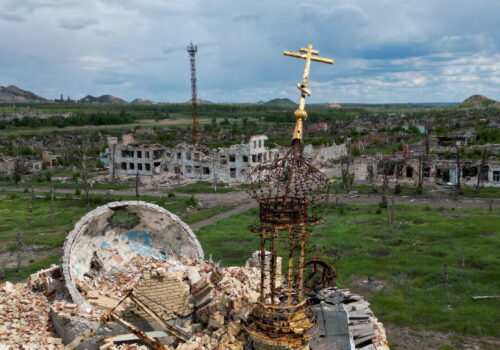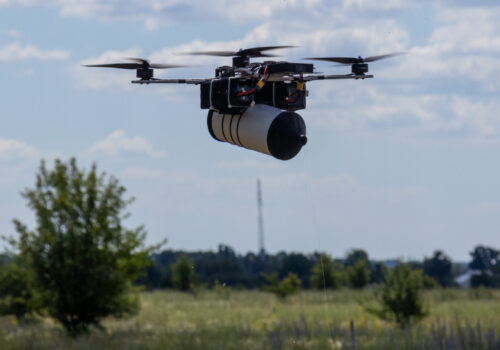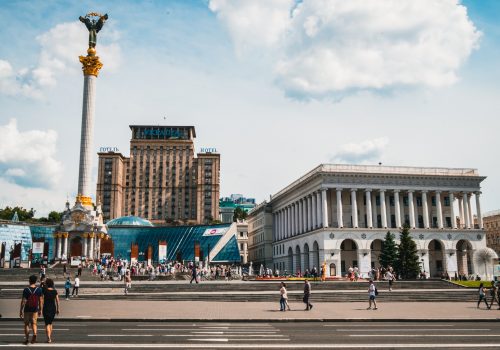The biggest news on the international scene is that US President Donald Trump and his Russian counterpart Vladimir Putin have agreed to meet on August 15 in Alaska to discuss peace in Ukraine, and that Russia has in fact described its conditions for ending military operations.
According to a Bloomberg report, the terms proposed by the Kremlin “would lock in Russia’s occupation of territory seized during its military invasion” in exchange for an end to the fighting. This would also require Ukraine to withdraw its troops from areas in the Luhansk and Donetsk provinces that it currently controls, ceding them to Russia.
The exact nature of the territorial settlement being discussed by Russia and the United States is still in question. “We’re going to get some back, and we’re going to get some switched,” Trump commented August 8. “There’ll be some swapping of territories to the betterment of both.”
The Trump Administration has also been in touch with Ukrainian and other European leaders to review what Russia is offering. Of course, Ukraine must agree to any deal. There is some concern in Kyiv that Trump might try to compel Ukraine to accept conditions he settles on with Putin. Ukrainian President Volodymyr Zelenskyy has pushed back indirectly by noting that the Ukrainian Constitution requires that any territorial changes must be approved by a plebiscite authorized by the country’s parliament.
How did Trump reach this point? Over the past two months, the US president set the stage by steadily increasing pressure on the Kremlin. He achieved this by persuading NATO members to increase defense and defense-related expenditures to 5 percent of gross domestic product over the next decade and, crucially, by confirming that military aid to Ukraine would be part of this.
Additionally, Trump agreed to sell US weapons, including advanced arms, to NATO members for transfer to Ukraine. He also set a deadline for Russia to back a ceasefire, first giving Putin fifty days to comply, and then reducing it to ten days ending August 8.
Following US Special Envoy Steve Witkoff’s August 6 meeting with Putin, where the Russian leader handed over terms for a ceasefire, Trump imposed tariffs on India for purchasing Russian oil, further increasing the pressure on Moscow. But given the ongoing talks with the Kremlin, Trump chose not to introduce more sanctions when the August 8 deadline passed without a ceasefire.
Stay updated
As the world watches the Russian invasion of Ukraine unfold, UkraineAlert delivers the best Atlantic Council expert insight and analysis on Ukraine twice a week directly to your inbox.
The Trump Administration is understandably pleased that the Kremlin now seems to be negotiating seriously. The leverage Trump assembled since June has certainly created the conditions for this. At the same time, it is also true that in reaching this moment, the US appears to have given up a great deal without achieving any concessions from Moscow beyond a willingness to stop hostilities as part of a ceasefire, not a peace settlement.
Put another way, territorial concessions to Russia are front-loaded, but critical issues that Moscow must accept will only be handled in subsequent peace negotiations. These issues are related to legitimate Ukrainian security concerns. They are presumably very important to the White House because Trump’s objective is to achieve a durable peace that ensures a stable, secure Ukraine. This includes Russian acceptance of the ongoing arming of Ukraine by the United States and other NATO nations, and the stationing of European peacekeepers in Ukraine.
There are also important tactical considerations. In the discussions with Russia about a ceasefire, the Administration made two critical concessions. They allowed the Kremlin, after the August 7 sanctions on India, to escape the August 8 deadline; and they accommodated Putin’s insistence that Zelenskyy not participate in this week’s Putin-Trump talks about the future of Ukraine. That has the smell of the 1945 Yalta Summit, where the United States, the Soviet Union, and Britain decided the fate of half of Europe over the heads of those nations.
These US concessions only encourage Putin to demand more and give less. His goal remains to achieve effective political control of Ukraine. The terms he is currently discussing with Trump reflect what Putin is willing to accept and do now. It says nothing about what he will do in the future.
Eurasia Center events

The Trump team seems to have recognized that it may have gotten ahead of itself and responded too enthusiastically to Special Envoy Witkoff’s initial report on his meeting in Moscow. This has been underscored by the revelation that Witkoff misinterpreted what Putin said, thinking that the Russian dictator was prepared to withdraw Russian forces from Ukraine’s Kherson and Zaporizhzhia provinces.
In any case, US Vice President JD Vance spent the past weekend in the UK consulting with the Brits, the Ukrainians, and other Europeans, who have called for a full ceasefire, no territorial concessions before a ceasefire, and strong security support for Ukraine.
It is notable that the White House is now once again talking about potentially inviting Zelenskyy to Alaska, but only in soft way, saying that it is “open” to the idea. They are likely trying to persuade the Kremlin to accept this. The question is if they will insist. The answer to that question will be an indicator of whether Trump is ready to do what is necessary to make the upcoming summit a step toward a stable peace.
It is understandable why Putin does not want either Europe or Ukraine represented in the exchange. He wants a deal with Trump that will be presented to Kyiv and other European capitals as a fait accompli. But since Trump wants a durable peace, adding Ukraine and Europe to the talks makes it easier to achieve that objective.
At a minimum, the White House should demand strict reciprocity in the negotiations. If Moscow insists on the acceptance of Russian control over Ukrainian land for a ceasefire, it must accept strong measures to bolster Ukrainian security as well.
Trump can underscore this by using the negotiating period to announce another large weapons sale to NATO countries for transfer to Ukraine, and by letting Putin know that if the bombing of Ukrainian civilians and cities continues beyond the Alaskan meeting, more secondary sanctions will be enacted. This is the path to a stable peace.
John E. Herbst is the senior director of the Atlantic Council’s Eurasia Center and a former US ambassador to Ukraine.
Further reading
The views expressed in UkraineAlert are solely those of the authors and do not necessarily reflect the views of the Atlantic Council, its staff, or its supporters.

The Eurasia Center’s mission is to enhance transatlantic cooperation in promoting stability, democratic values, and prosperity in Eurasia, from Eastern Europe and Turkey in the West to the Caucasus, Russia, and Central Asia in the East.
Follow us on social media
and support our work
Image: ddp/Sven Simon via Reuters Connect





